Taking Pharma Industry Discourse and Networking to New Heights
Article
Clinical
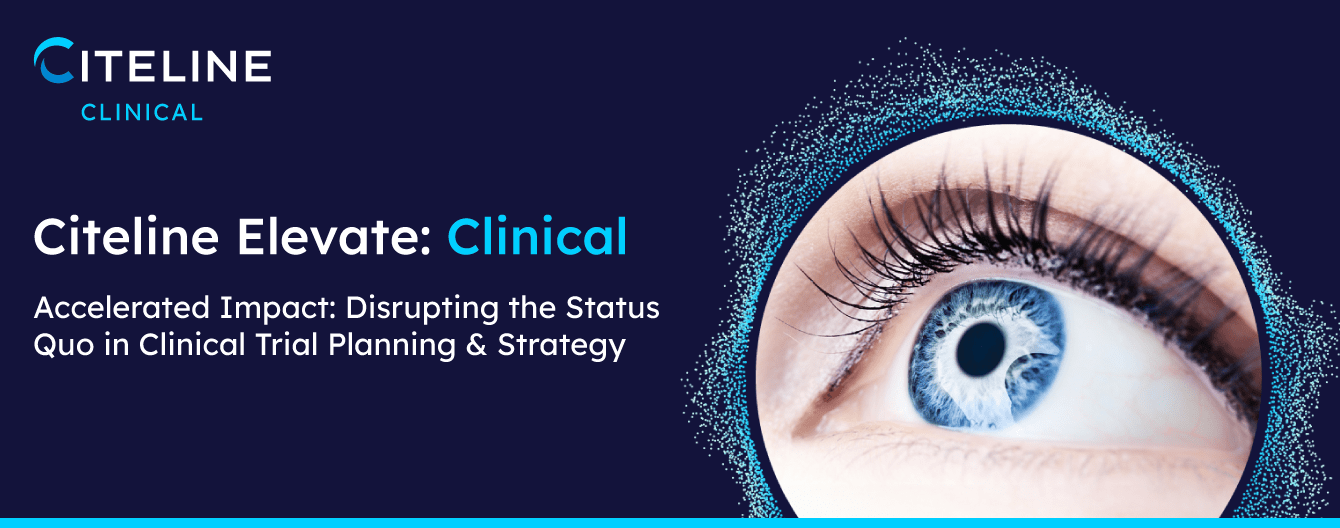

A resurgence in company acquisition, RWD as an enabler of innovation, and increased protocol design customization were a few of the trends discussed at the Citeline Elevate event in Boston, which brought together key stakeholders in the pharmaceutical industry.
Living up to its name, the recent Citeline Elevate event in Boston, a precursor to the annual Citeline Awards, brought together some of the brightest minds in the life sciences industry for engaging sessions on everything from artificial intelligence (AI) to real-world data (RWD).
Presenters and panelists took a hard and honest look at the industry, leading to a barrage of questions from attendees representing 16 pharmaceutical companies. Abigail Dirks, Data Scientist, Tufts Center for the Study of Drug Development (CSDD), and Suzanne Caruso, SVP New Product Strategy for Norstella, Citeline’s parent company, set the stage with an overview of the clinical trial landscape.
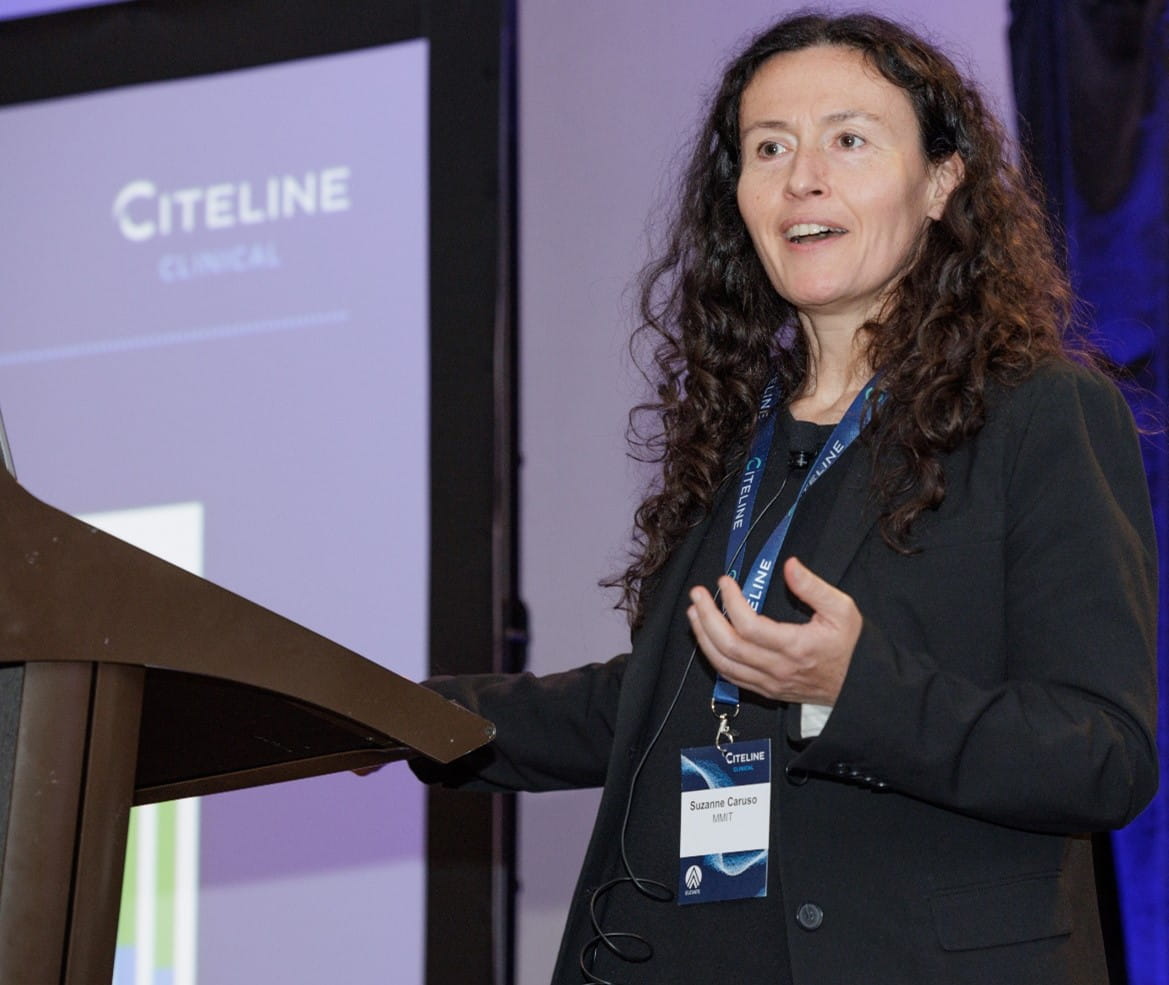
Suzanne Caruso, Norstella
“We are absolutely seeing kind of a resurgence in company acquisition,” Caruso said. She pointed out that small biotechs are serving as an “innovation engine” for larger pharmaceutical companies.
On the global scene, she said that while North America accounted for over 50% of all clinical research in 2023, there is much more interest in the Asia-Pacific region. In the past, China would only conduct its own studies and were excluded from global studies. “That is shifting,” Caruso said. “I think that is going to be an area of opportunity for us.” Australia is another country of interest, she said, because studies start up very quickly there.
In terms of rare disease, Caruso’s personal opinion is that “we will see more and more rare diseases, not necessarily because we're defining more rare and rare diseases, but because we're getting more sophisticated on being able to determine mutation-driven and combination mutation-driven disease. So it's not that there are all these new diseases out there, it's that we are getting more and more specific in how we define a patient population, and those patient populations mean that we're going to get to smaller and smaller patient populations to be able to treat.”
With AI/machine learning a topic of increased curiosity and concern among industry stakeholders, Caruso asked attendees if their companies work with AI. About half the attendees raised their hands. When she asked how many use AI-driven tools in clinical research, only about one-third raised their hands.
In 2022, 175 trial submissions were supported by machine-learning models. “We expect this to be much, much more … and just kind of explode,” Caruso predicted. “We know that it is the future,” she said, acknowledging that “one of the biggest challenges around AI is trust.”
Caruso said the impact of AI and machine learning is starting to be felt by the industry:

Source: 2024 Industry Outlook
Caruso addressed another industry focus, RWD. “There are many different ways RWD is being included in clinical research. It's being included all the way across what I call the clinical trial lifecycle,” she said. “But I will say the place that it's being driven from the most is oncology.”
Duncan Emerton, PhD, VP of Consulting & Analytics for Citeline, took attendees on a deeper dive into RWD and how it can be used to optimize clinical trial strategy and patient selection. “I think it's up to us as an industry to develop some heroes,” he said. “And I think real-world data as it relates to clinical development, plus a lot of other areas in the development of medicines, has the potential to become a hero.”
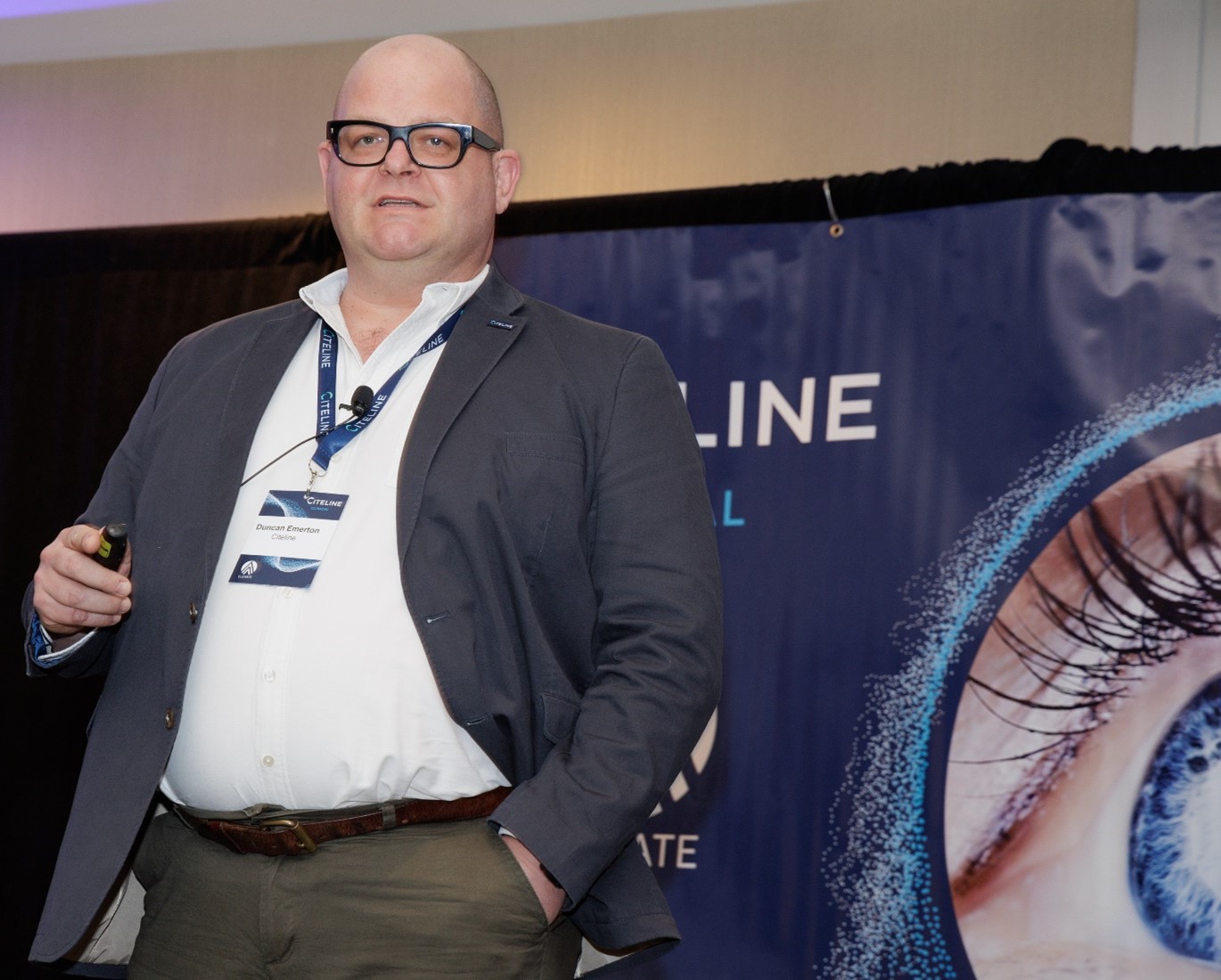
Duncan Emerton, Citeline
Emerton said in the development, growth and maturity phases, there are many areas in which real-world data “comes into its own” and can inform decisions, around target selection, site selection, and study design. Real-world data will continue to be a critical enabler of innovation within the life sciences industry.
He said that at a very high level, RWD can be bucketed into traditional vs. emerging. Traditional RWD includes claims databases, safety reporting systems, federated systems, cross-sectional survey databases and more. Emerging RWD includes data from wearables, patient-reported outcomes, imaging, molecular profiling labs, etc. “All of this data is out there in the ether.” Emerton cautioned that regulators such as the FDA, the MRHA, and EMA are watching closely.


Two major ways RWD can help clinical research, Emerton said, are site and investigator selection, and diversity. “We can identify sites which have access to suitably diverse patient populations, and we can also use data to engage with sites, communities, and patients through social determinants of health, making sure that we are putting our sites in areas where there is a diverse patient population and they are able to get into the study.”
RWD in clinical settings is just the tip of the iceberg. Emerton cited a number of nonclinical use cases, including market access, competitive intelligence, commercial operations, and patient journey mapping. RWD can be used to help understand where patients have come from and where they're going, how they're being treated, when they're being treated, who's treating them and what they're being treated with.
“Real-world data has grown in prominence in the life sciences industry. It's not a new thing,” Emerton conceded. “It's been around for a number of years now, but I think in the last five, maybe ten years, real-world data has really floated to the top in terms of a dataset that has a real impact on the development of medicines across the lifecycle. From clinical trials to regulatory approval through to commercialization, it can help optimize clinical strategy and planning.”
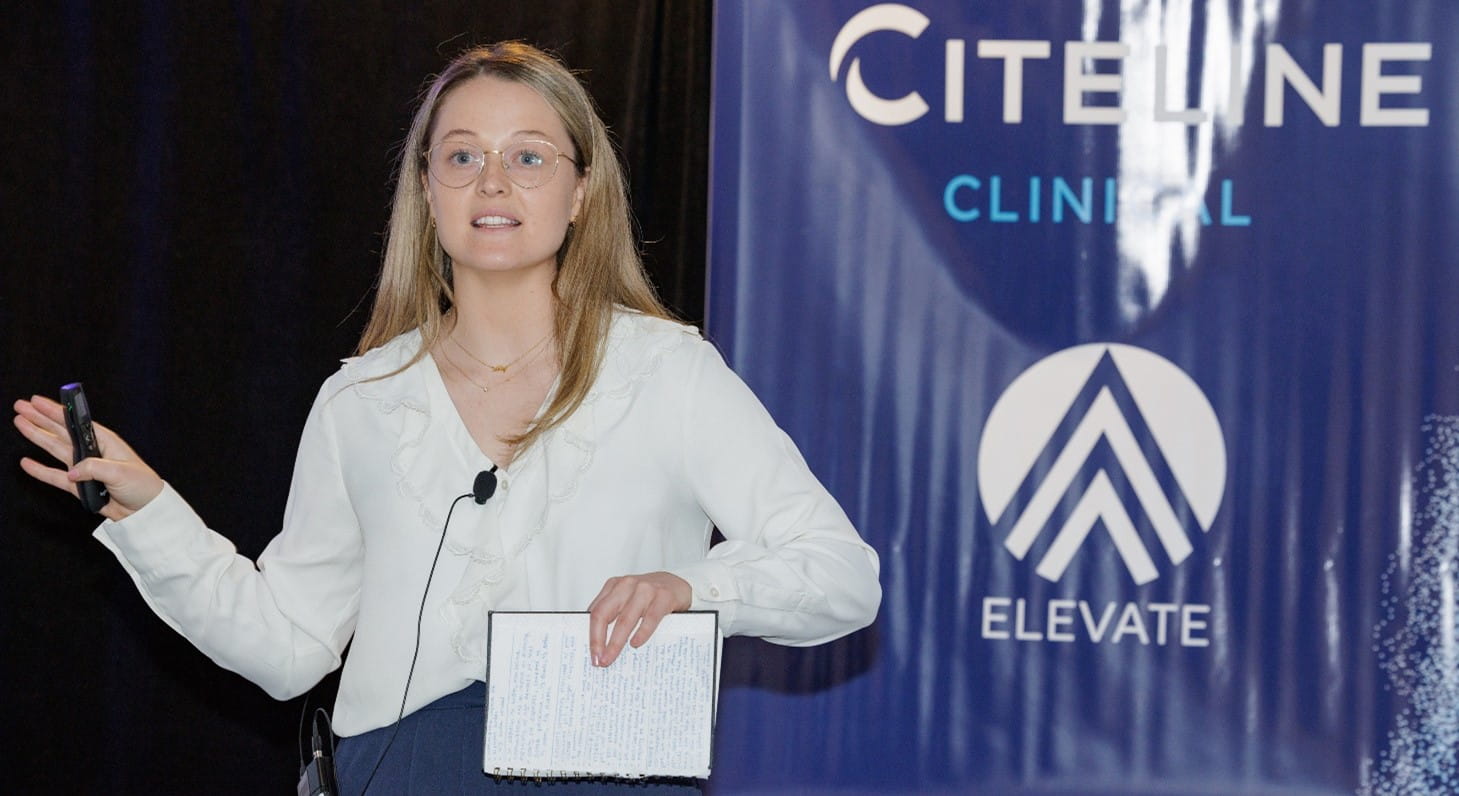
Abigail Dirks, Tufts CSDD
Dirks attributed much of the current industry environment to several drivers, including increased protocol design customization (phase agnostic). “To be able to support this increase in customization,” which increases the burden on sites, she said “companies are relying more heavily on third parties. So there's a remarkable increase in the number of tech vendors included in clinical trials. There are more CROs and even recruitment agencies are being used. ... In fact, in 2019 it was the first year in history where companies were spending more externally than they were internally.”
More customized protocols also impact site enrollment performance. “We're seeing 11 percent of sites fail to enroll a single patient and 37 percent under-enroll,” she said. “So that's still about half of sites are not meeting their enrollment targets.”
The snowball effect of customization also negatively impacts clinical trial diversity. “And so clearly we're seeing disparities,” Dirk said. “We see underrepresentation … for every racial and ethnic group except for white.” Patients who are Black or of African descent are being under-enrolled by about 64%, Asian patients by 30%. Other segments, including indigenous groups, are being under-enrolled by over 70%, and Hispanic and Latino patients by about 30% on average across all trials since 2007.
Demographic Disparities in Clinical Trials

Source: Tufts CSDD 2023; NDAs and BLAs approved by FDA between 2007 and 2021
Compounding this is fallout from the pandemic. Dirks estimates 3,000 sites were forced to close their doors. Dirk said that, pre-pandemic, in 2012 almost 70% of sites conducted only one trial per year, dropping to about 40% by 2022. “So we see more sites are conducting more than two trials per year or even six or more trials per year,” she said. For the rare disease community, she added, this means fewer sites with access to those patients.

Source: Tufts CSDD, 2019
Looking at Phase III pivotal clinical trial performance over the past 10 years, Dirks said there has been an increase in the number of endpoints, more substantial protocol amendments, more procedures and visits, as well as more procedures per visit. Trials are taking longer and facing operational challenges. Dropout rates have risen, pointing to increased patient burden.
Dirks said protocol amendments have increased across the board, averaging more than three amendments per study. An amendment takes about three months to implement, at a 2013 cost of about $750,000. “So it's costly and it's having an impact on timelines,” Dirks said. “An interesting thing about the amendments is also that the top reason for an amendment is shifts to eligibility criteria.” It is presumed that this is to recruit more patients, but Tufts found that while studies with at least one substantial amendment were screening more patients, fewer patients were completing the studies.
“I know I painted a bleak picture,” Dirks said, “but there is some optimism for the future and good things to come.”
She gave examples of how patient and community input, coupled with technology and data, can enhance the drug development process:
In an informal fireside chat, Claire Riches, VP of Clinical Solutions for Citeline, and Baba Shetty, CTO of Syneos Health, continued the discussion of AI in clinical trials. They touched on both the promise and the inherent perils of the technology.
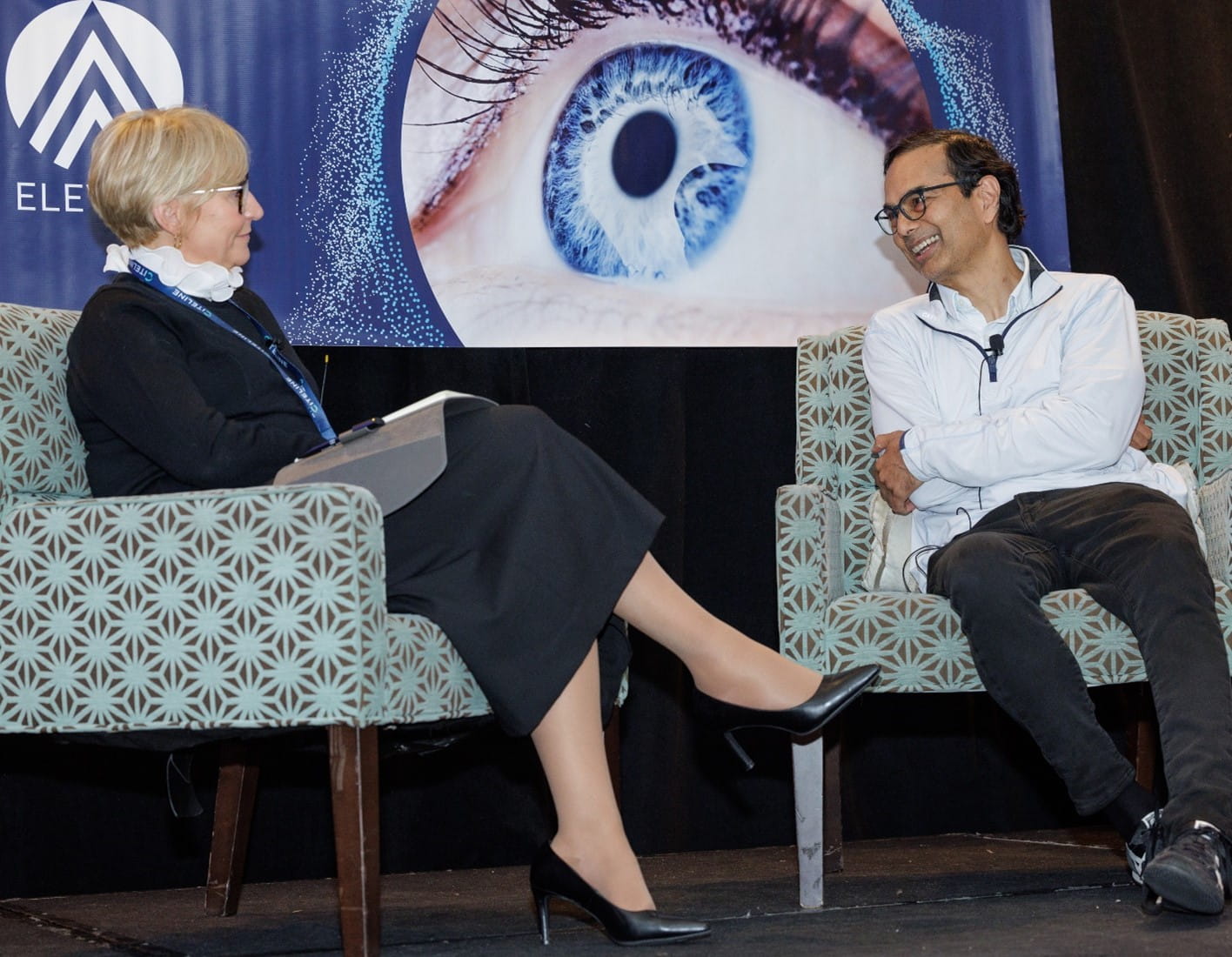
Claire Riches, Citeline, and Baba Shetty, Syneos Health
Kicking off the discussion, Shetty referred to author Douglas Adams’ (The Hitchhiker’s Guide to the Galaxy) take on technology: Anything that is in the world when you’re born is normal and ordinary and is just a natural part of the way the world works. Anything that’s invented between when you’re 15 and 35 is new and exciting and revolutionary, and you can probably get a career in it. Anything invented after you’re 35 is against the natural order of things. “So I think AI is in that mode right now where people are trying to decipher it.
“I think about the two different kinds of AI. There's kind of the discriminant AI that's numerical database structured data, predictive models built upon that which we've been using in business for a while now. … But of course the generative AI kind of tidal wave that we've all seen in the past year is the kind of AI that everyone's really talking about right now. I think that will have enormous impact in every industry where knowledge work is done, including obviously our own.”
Riches asked Shetty to shed some light on the potential perils of AI and how to mitigate that risk. Shetty responded: “AI is only as good as the inherent training data on which it has learned from. And if there is a bias inherent in the training data, then the AI system will in fact be biased. That's one type of concern.” Another concern is the fundamental inconsistency of large language model-based systems.
That said, Shetty sees great potential for AI in terms of both strategic and operational decisions in the clinical space.
An expert panel on disruptive clinical trial strategies, moderated by Pink Sheet senior writer Sarah Karlin-Smith, rounded out the event. Panelists included Georgia Dangel, Senior MSL, Genentech; Matt Winton, Chief Operating Officer, Inozyme Pharma; Bob Zambon, Vice President, Technology Strategy & Strategic Partnerships, Syneos Health; and Patrick Hughes, Co-Founder & Chief Commercial Officer, CluePoints. Read the Pink Sheet article on FDA enforcement based on this hard-hitting session.